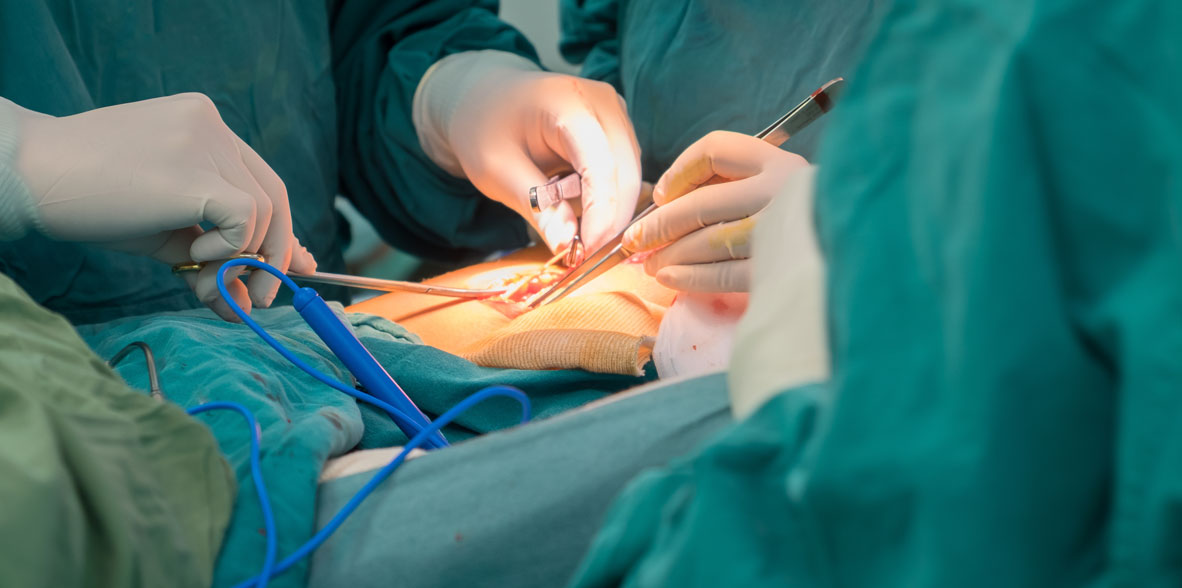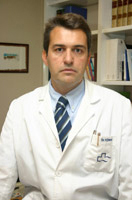

 Centro Médico Teknonen/health-centers/centro-medico-teknon
Centro Médico Teknonen/health-centers/centro-medico-teknon
The objective of our group in the treatment of inguinal hernia is to perform a surgery "without tension" to be able to offer our patients a quick recovery and incorporation into their daily activity, less postoperative pain and above all a low rate of recurrence.
This concept is based on 2 important factors:
- Inguinal hernias are caused by metabolic disorders that lead to progressive destruction of the fibroconnective tissue of the groin, making that tissue unsuitable for use in hernia repair.
- The fact that traditional titular repairs are associated with undue strain of the suture line, leading to increased postoperative pain, longer recovery time, and high recurrence rates.
" Choose the technique individually in each patient ".
They are those that protrude through the umbilical ring not obliterated in embryonic life, which would be congenital hernias, or through an open umbilical ring after birth, which would be the hernias acquired from the child and the adult.
The annulus fibrosus that remains after the fall of the umbilical cord is covered by a fascia that goes from side to side, Richet's fascia, to this ring they reach from below: the fibrous remains of the umbilical veins and the fibrous cord of the urachus, reaching from above the cord of the umbilical vein.
Predisposing causes
Obesity, pregnancies, repeated births, sudden weight loss in the obese, intra-abdominal tumors, efforts in patients with constipation, prostaterates and coughers, in addition the aponeuroses of the broad muscles of the abdomen make traction on the pods of the recti separating them. In children the predisposing causes can be, cough, constipation, crying, sneezing, flatulence, trauma.
Congenital umbilical hernias, would be the omphalocele or amniotic hernia, which must be treated as an emergency surgical condition, it is not a strangulated hernia, nor a hernia, from the embryological point of view it is a lack of coalescence in the abdominal wall, it is the protrusion of viscera that have not been introduced into the abdomen through the base of the umbilical cord.
The hernial sac consists of the amniotic sac and the peritoneum, it can sometimes be very small and be confused by a normal umbilical cord. When they are large there is a great disproportion between the abdominal cavity and the viscera that protrude, you have to try to close the sac and cover it with skin.
Spieghel or Spieghelian hernias are ventral hernias that occur along the subumbilical portion of the semilunar line of Spieghel through the fascia that bears its name. They are rare and, unless large, difficult to diagnose because they are interparietal and contained by the aponeurosis of the greater oblique muscle. Ultrasound and CT scans often reveal symptomatic Spieghel hernias that are too small to be detected by clinical means; Large ones can be confused with sarcomas of the wall of the abdomen. Spieghel's fascia consists of the fused aponeuroses of the oblique minor and transverse muscles of the abdomen, between the belly of these muscles outward and the rectus muscle in the midline. Below the navel the fibers are more or less parallel and can separate and allow the peritoneum and preperitoneal fat to exit through the cleft defect, but retained by the overlying aponeurosis of the greater oblique muscle of the abdomen. Spieghel's hernias are more common in the area between the navel and the line than the anterosuperior iliac spine below the arcuate line and above the inferior epigastric vessels. Spieghel's hernias require the performance of a hernioplasty with mesh and sometimes laparoscopic surgery may be indicated.
By definition, a hernia is the protrusion of viscera contained in the abdomino-pelvic cavity, through areas of weakness of the abdominal or perineal wall congenitalitously pre-constituted, or through the fascial and muscular layer intended to contain them.
The important features of a hernia are the hernial hole and sac. The hole is the defect in the innermost aponeurotic layer of the abdomen and the sac an evagination of the peritoneum.
The neck of the hernial sac corresponds to the hole. The hernia is external if the sac exits completely through the abdominal wall and internal if it is located within the visceral cavity.
The hernia is reducible when it is possible to return to the abdomen the viscera that has come out and irreducible if this is not feasible. A strangulated hernia is one in which the vascularization of the viscera that has come out is compromised; It occurs in those with small holes and large sacs.
Incarcerated hernia is irreducible, but not necessarily strangulated. A Richter hernia is one in which the sac contains only one side of the wall of the intestine (always antimesenteric).
Different types:
- Inguinal
- Crurales
- Umbilical
- Epigastric
- Obturatrices
- White line or epigastric
- Spieghel
- Sciaticas the sciatics
- Perineales
- Upper and lower lumbar
- Diaphragmátics
- Paraostomals
- Incisional hernia or eventration: also called incisional or laparotomic hernia. It is defined as the exit of the abdominal continent by default of the non-anatomical wall but produced by a previous surgical intervention, the abdominal contents cross the muscle-aponeurotic wall and is under the skin. Its two main causes are obesity and infection. The treatment will always require prosthesis - mesh either by laparoscopy technique or by conventional open surgery.
These hernias are a protrusion of preperitoneal fat and peritoneum through the fibers of the rectal sheath that decusses in the midline (white line) between the xiphoid process and the navel. Epigastric hernias often do not shrink, invariably have small aponeurotic defects, are sometimes multiple, and often cause discomfort disproportionate to their size. It is easy to repair them through a vertical incision in the skin through a hernioplasty with preperitoneal mesh, sometimes laparoscopic surgery may be indicated.



































